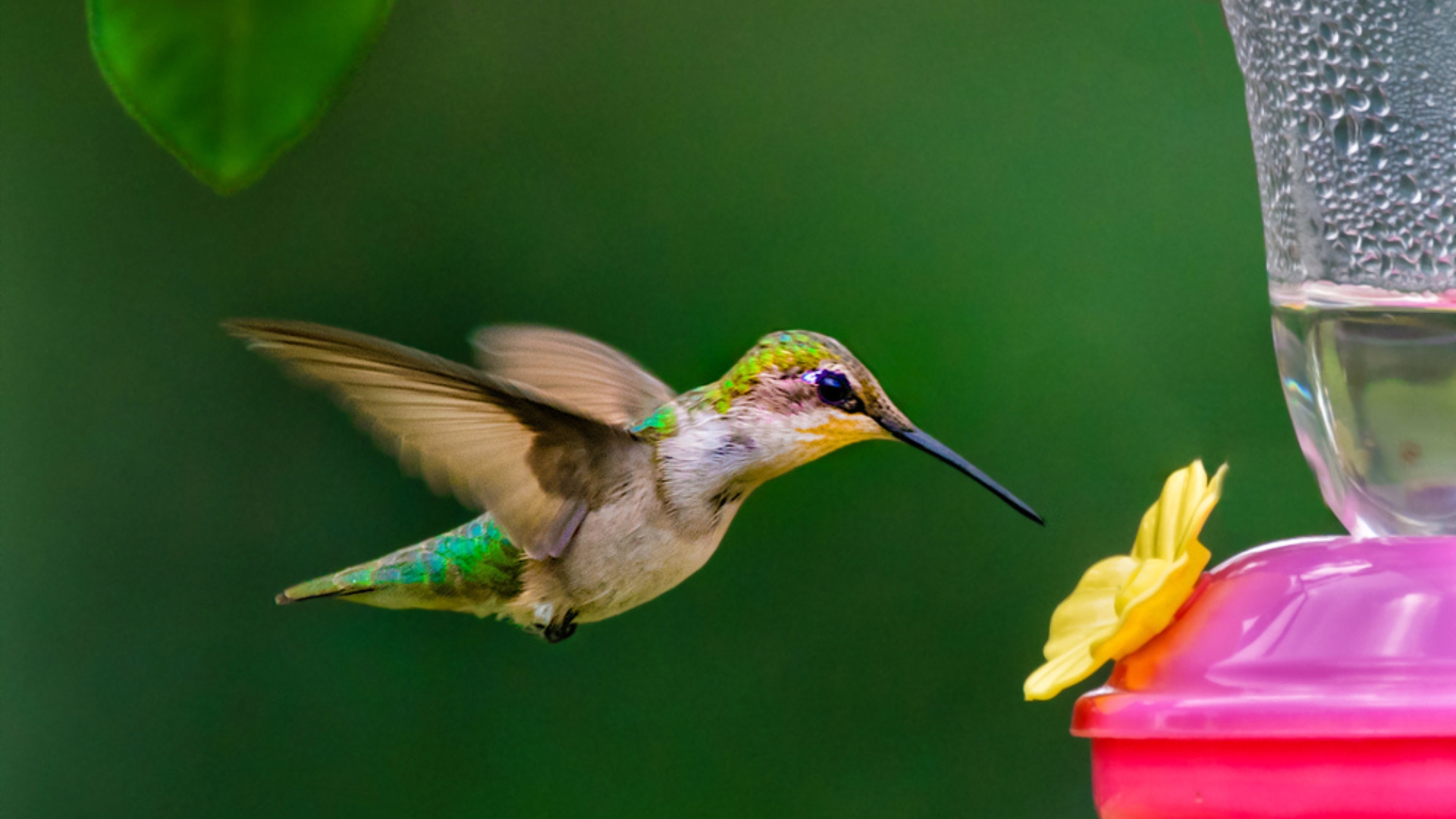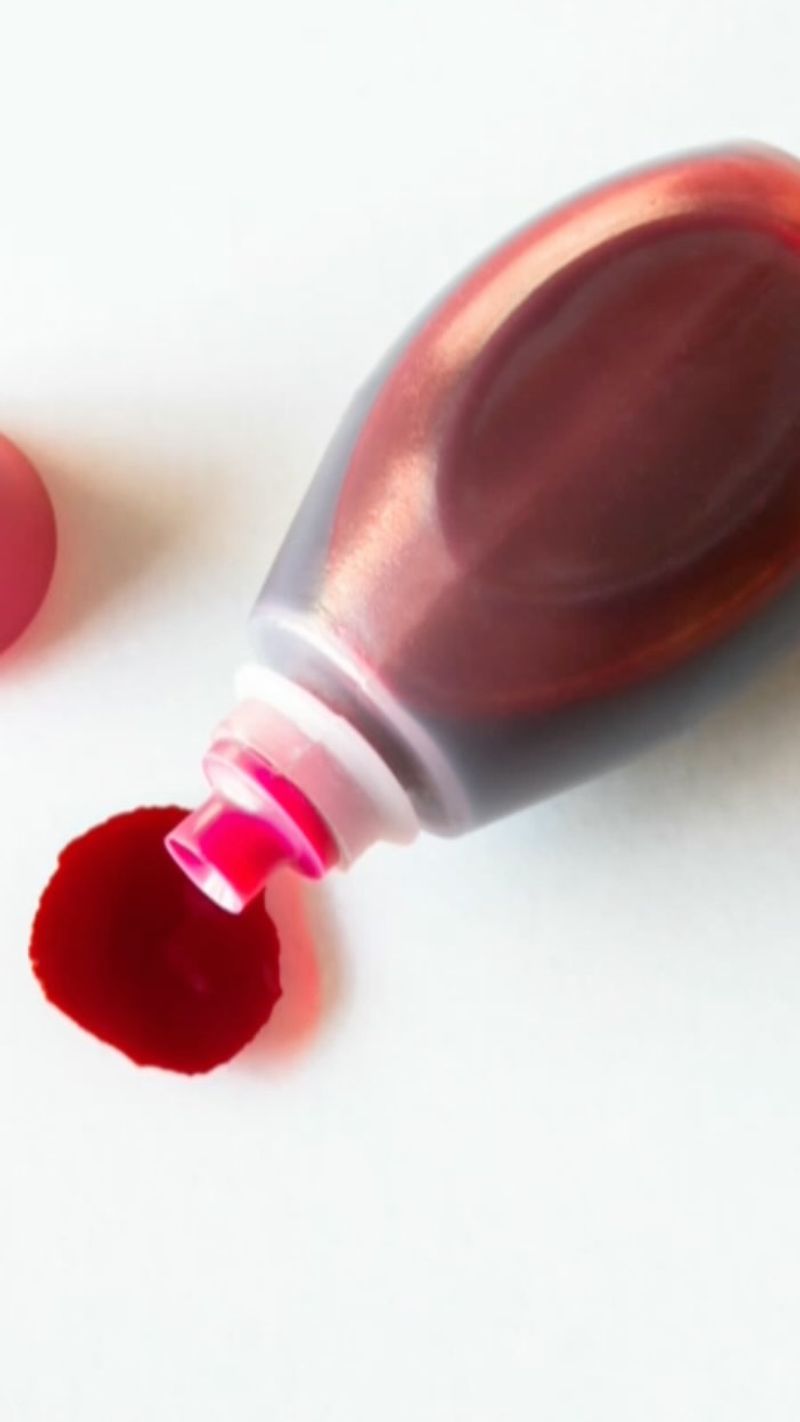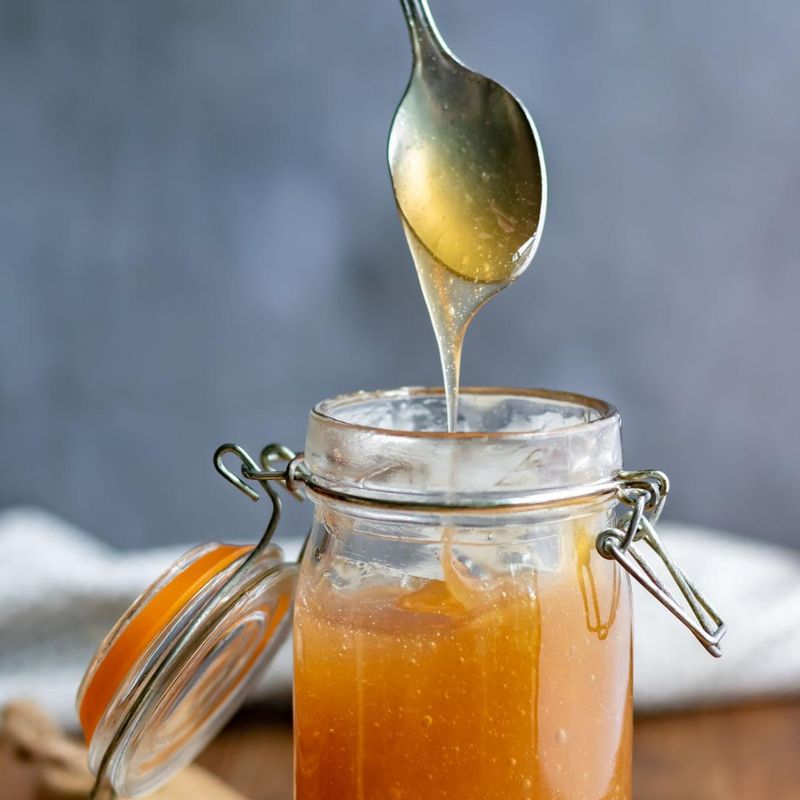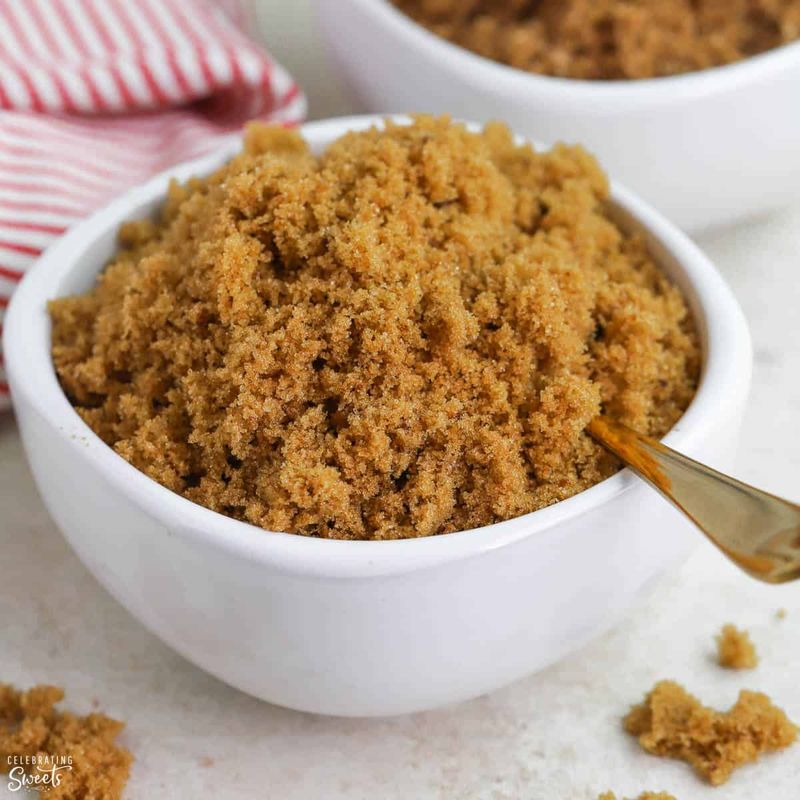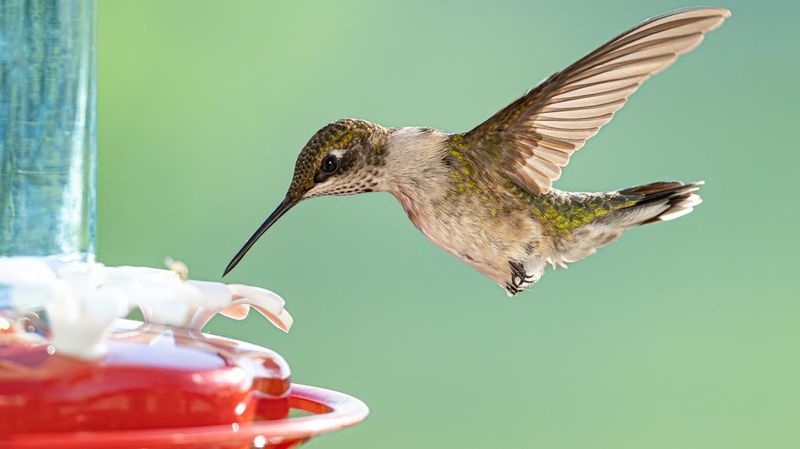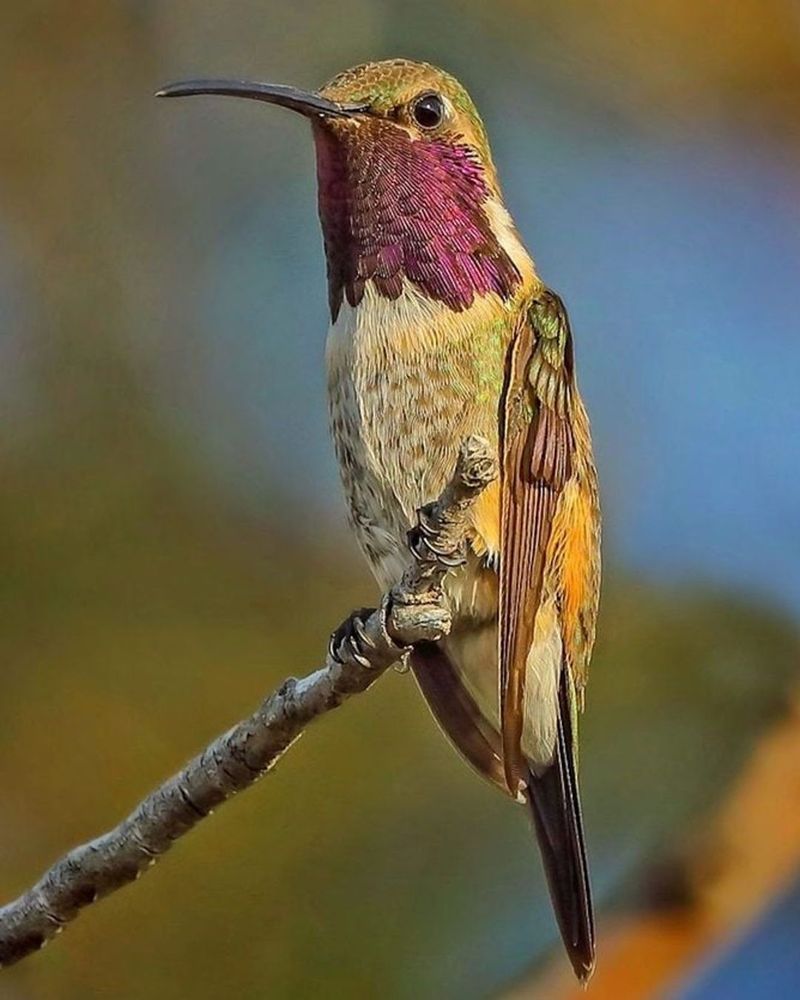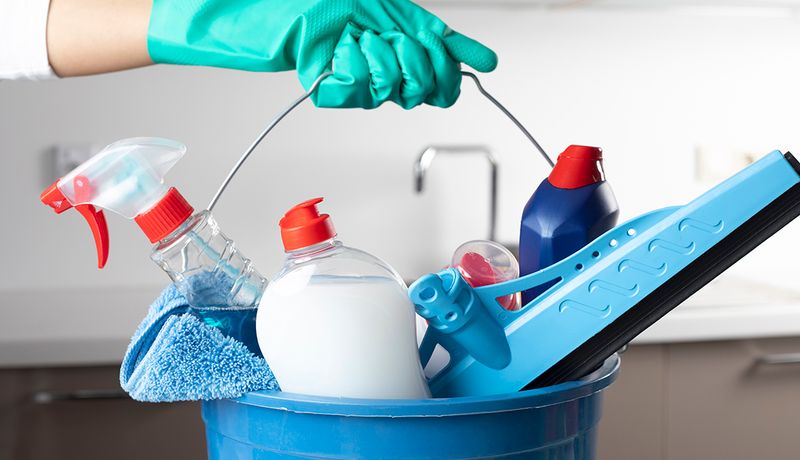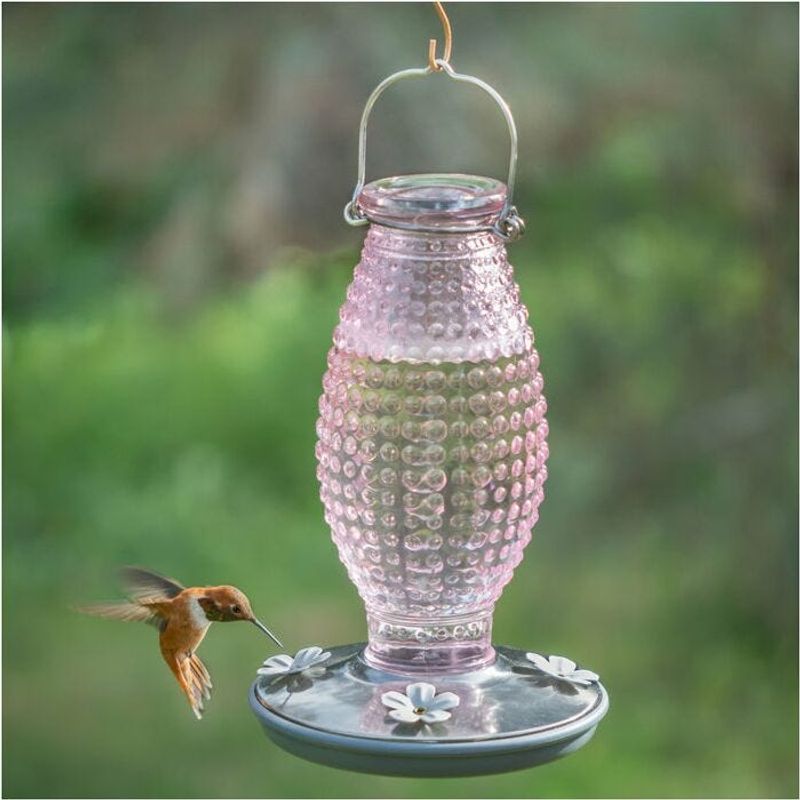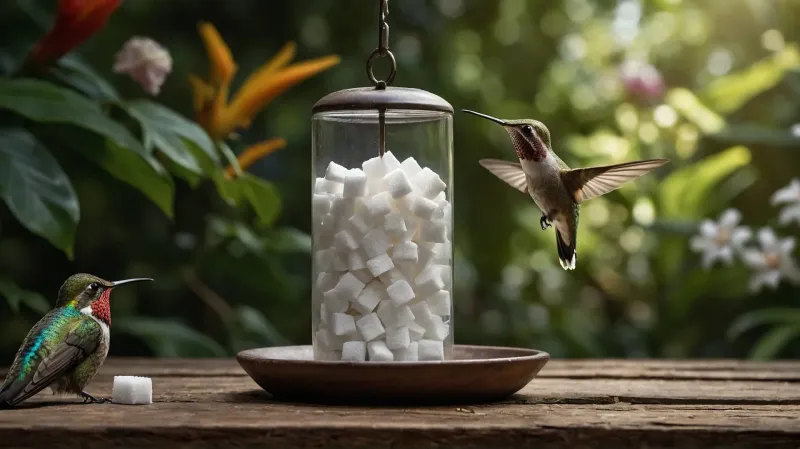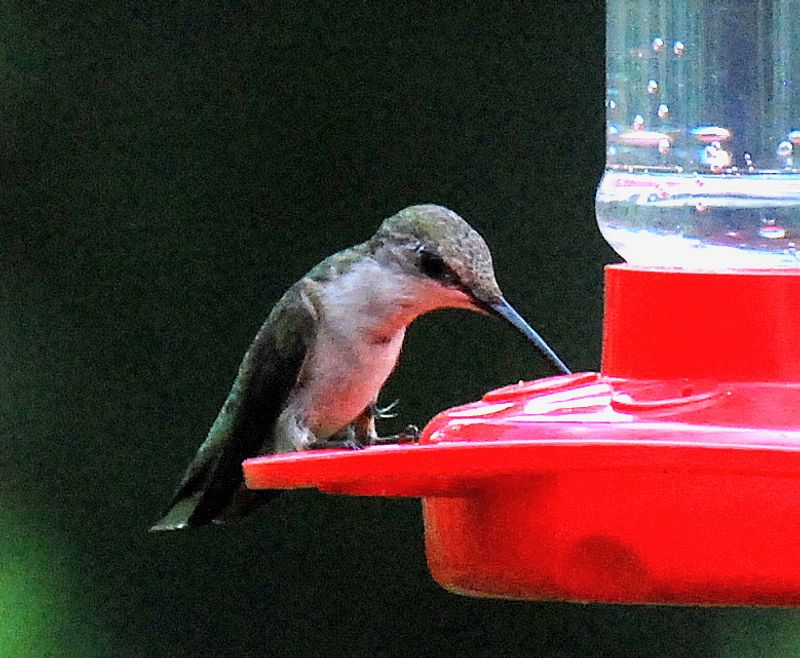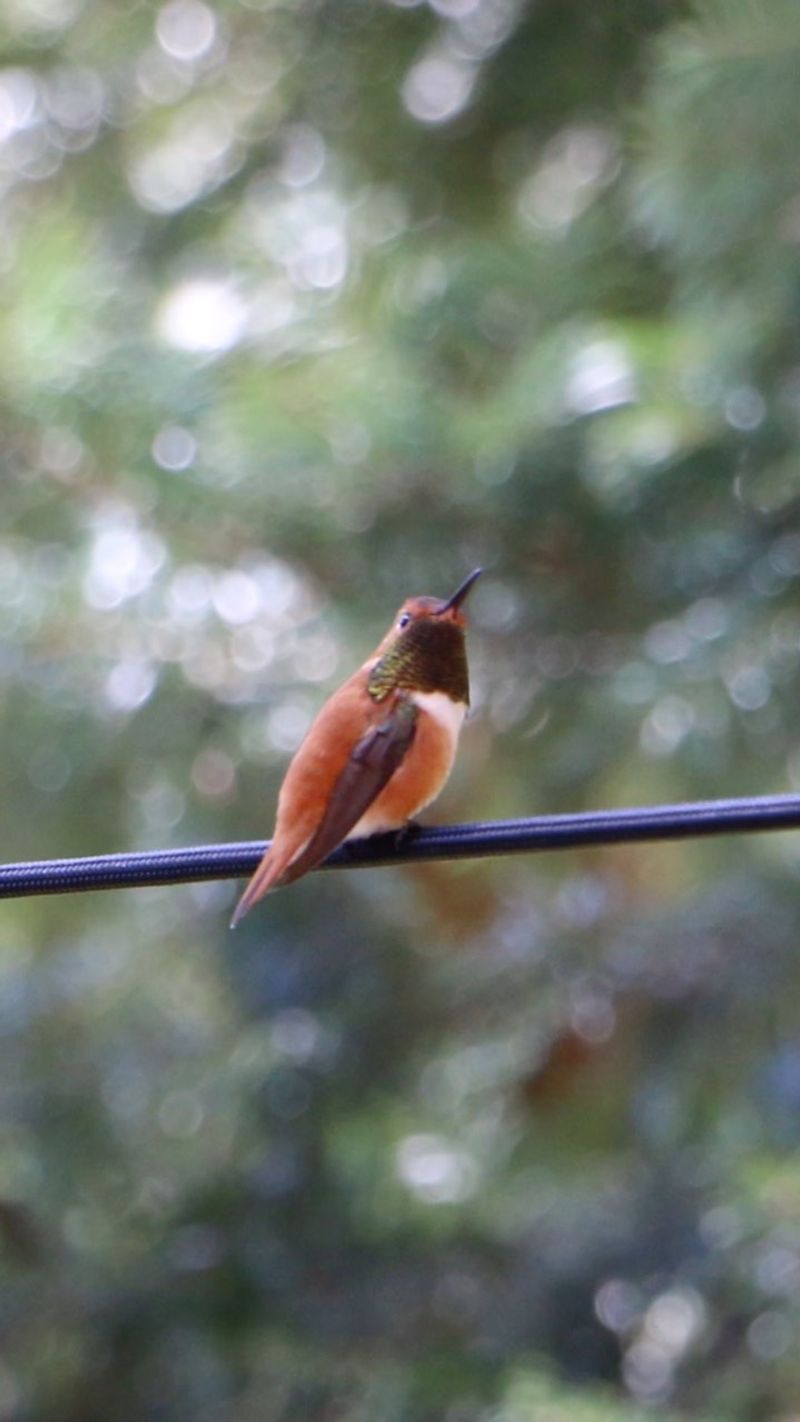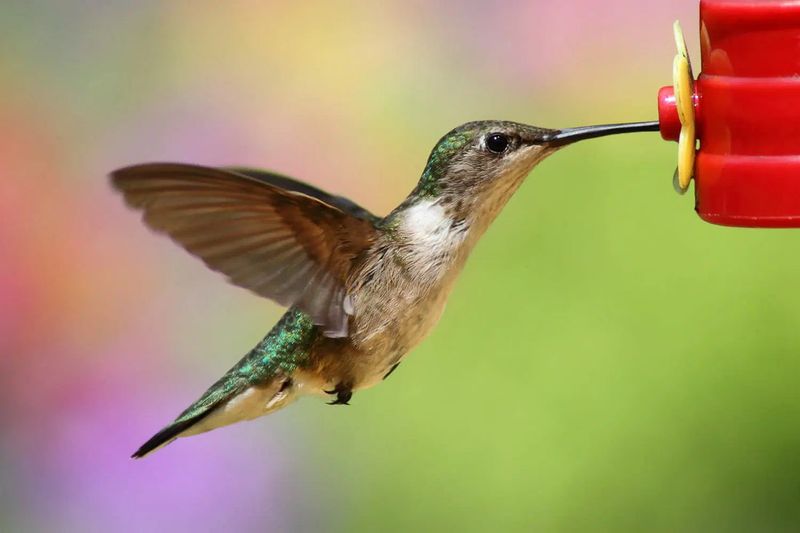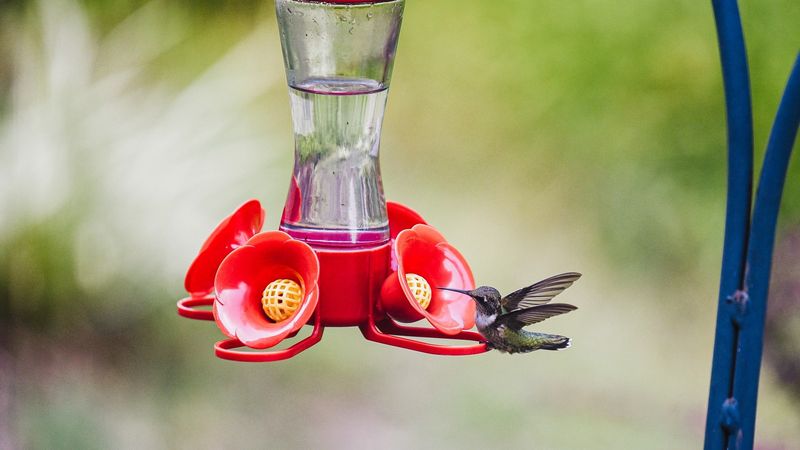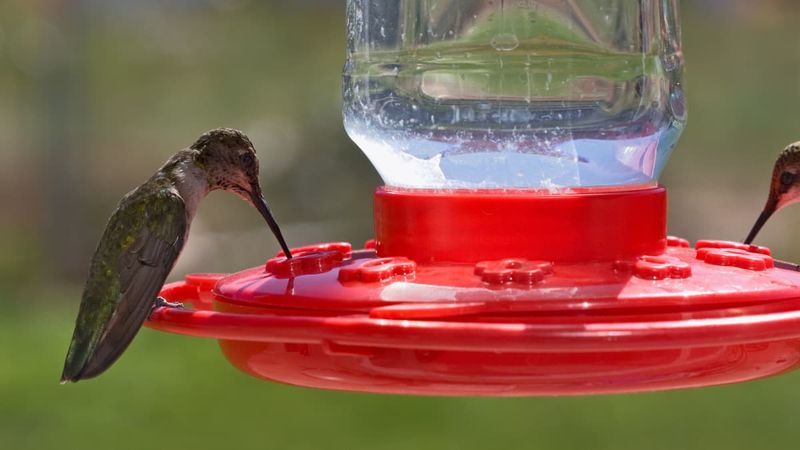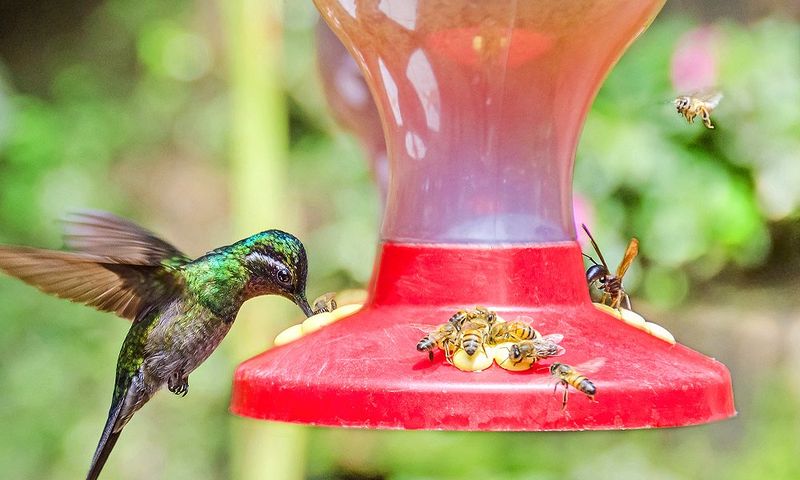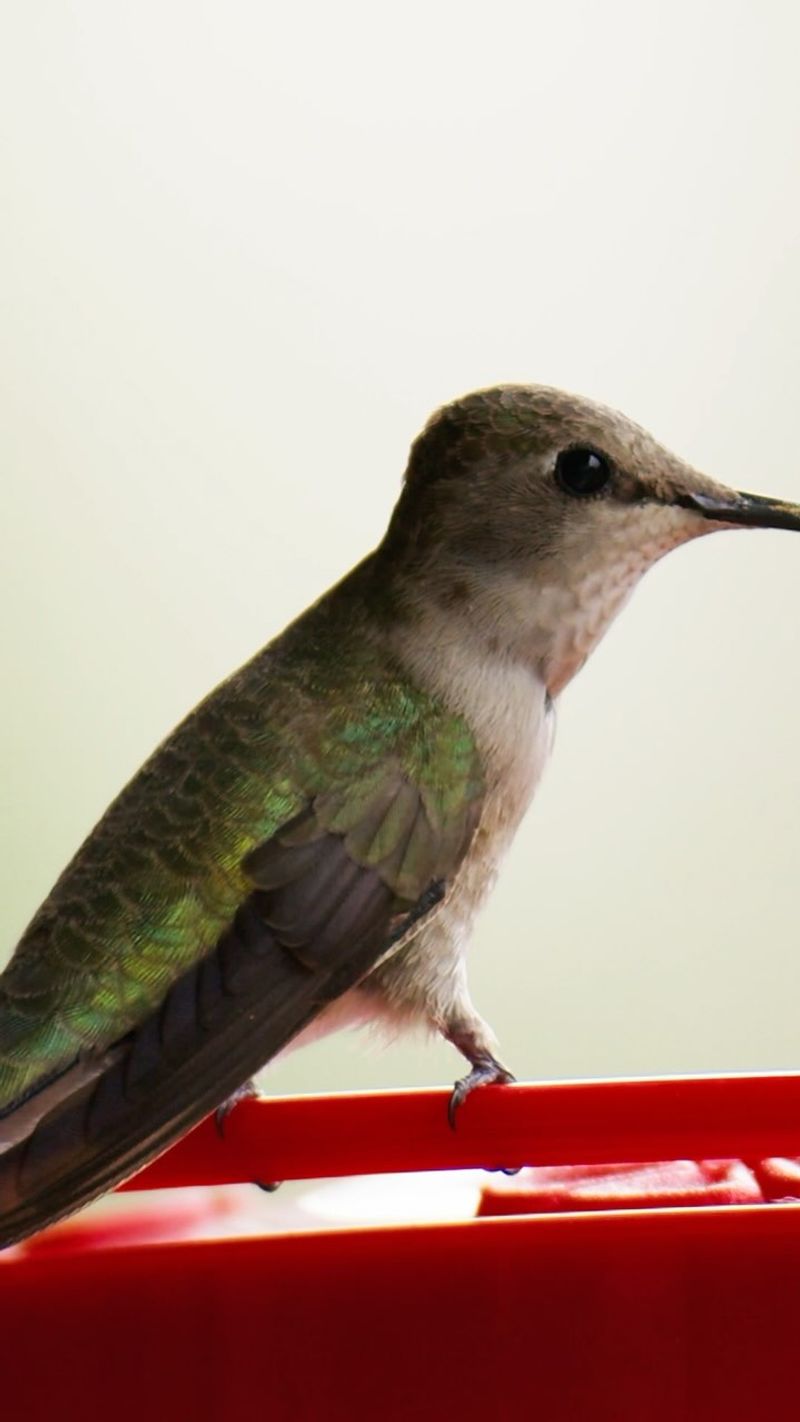Feeding hummingbirds may seem like a no-brainer—but the devil’s in the details. One wrong move can turn your backyard buffet into a danger zone. From well-meaning mistakes to outright no-nos, these 18 items have no business near your feeder.
If you want to keep your tiny guests healthy and humming, here’s what to leave out—and why it matters more than you think.
1. Red Food Coloring
Many people think adding red dye makes nectar more attractive to hummingbirds. The truth is these tiny birds are naturally drawn to the color of your feeder, not the liquid inside.
Artificial dyes contain chemicals that may damage hummingbirds’ kidneys and livers over time. Some studies suggest these dyes might even cause tumors in the birds.
Plain sugar water provides all the energy hummingbirds need without any harmful additives. The feeder itself can be red – that’s enough to catch their eye!
2. Honey
Honey seems like a natural choice for sweet-loving birds, but it’s actually dangerous for hummingbirds. When mixed with water, honey quickly ferments in warm weather, creating a perfect environment for deadly fungal growth.
Fungal infections from spoiled honey solutions can cause a fatal tongue condition called candidiasis. The thick consistency of honey also makes it harder for hummingbirds to drink through their specialized tongues.
Stick with plain white sugar instead – it most closely resembles the natural nectar hummingbirds get from flowers.
3. Brown Sugar
Brown sugar contains molasses, which gives it that rich flavor humans love. Unfortunately, the iron content in molasses is too high for hummingbirds’ tiny bodies to process properly.
Their specialized diet in nature doesn’t include these minerals in such concentration. The extra ingredients in brown sugar can lead to liver and kidney problems for these delicate birds.
Regular white table sugar mixed with water creates a solution similar to flower nectar. Simple is better when it comes to hummingbird nutrition!
4. Artificial Sweeteners
Zero-calorie sweeteners might help humans cut down on sugar, but they’re absolutely useless for hummingbirds. These tiny powerhouses need real sugar’s energy-rich calories to fuel their incredibly fast metabolism.
Hummingbirds can beat their wings up to 80 times per second! This requires tremendous energy that only real sugar can provide. Artificial sweeteners offer no nutritional value and could leave visiting birds weakened or starving.
Sweeteners like aspartame or stevia might even taste bitter or unpleasant to hummingbirds, driving them away from your feeder entirely.
5. Moldy Nectar
Forgotten feeders quickly become breeding grounds for harmful molds and bacteria. In hot weather, sugar water can start fermenting within just 1-2 days, turning cloudy with dangerous microorganisms.
Mold spores can cause respiratory infections and deadly tongue fungus in hummingbirds. Watch for nectar that looks cloudy, has floating particles, or smells sour – these are warning signs it’s gone bad.
Clean feeders thoroughly every 2-3 days during hot weather and every 4-5 days when it’s cooler. Your tiny visitors’ health depends on fresh, clean nectar!
6. Fruit Juices
Fruit juices might seem like a natural alternative to sugar water, but they’re far too acidic for hummingbirds. The high acidity can irritate their sensitive digestive systems and cause serious health problems.
Most juices contain preservatives, added sugars, and other ingredients that weren’t meant for these specialized birds. Even fresh-squeezed juices have the wrong sugar concentration compared to flower nectar.
Natural flower nectar contains mostly sucrose (table sugar), while fruit juices contain fructose and other sugars in proportions that aren’t ideal for hummingbird metabolism.
7. Bleach Residue
Cleaning feeders with bleach can help kill harmful bacteria, but any leftover residue is toxic to hummingbirds. Even tiny amounts of bleach can burn their delicate throats and digestive tracts.
After cleaning with a diluted bleach solution (1 part bleach to 9 parts water), you must rinse the feeder thoroughly multiple times. Hot water alone isn’t enough to remove all chemical traces.
Consider using white vinegar instead – it’s effective at killing mold and bacteria but safer if small amounts remain. Always air-dry feeders completely before refilling with fresh nectar.
8. Metal Parts
Feeders with exposed metal parts can leach harmful substances into sugar water. The acidic nature of sugar solution causes metals to corrode over time, releasing toxic compounds.
Copper is especially dangerous for birds, causing liver damage even in small amounts. Galvanized metal contains zinc that’s also toxic to hummingbirds. Even rust from iron parts can contaminate nectar.
Choose feeders made from glass, BPA-free plastic, or ceramic with plastic or silicone feeding ports. If your feeder has metal parts, make sure they don’t come in contact with the nectar solution.
9. Concentrated Sugar Solutions
Making nectar too sweet by adding extra sugar creates problems for hummingbirds. The correct ratio is 1 part white sugar to 4 parts water, which mimics the sugar concentration in natural flower nectar.
Solutions with too much sugar are difficult for hummingbirds to digest and can cause dehydration. Their bodies must use extra water to process the excess sugar, potentially leading to kidney stress.
Stronger mixtures don’t provide better nutrition – they just make the birds work harder to process their food. Stick with the 1:4 ratio for healthy birds!
10. Organic Sugar
Organic, raw, or natural sugars often contain extra minerals and compounds not found in refined white sugar. While these may be healthier choices for humans, they’re not ideal for hummingbirds.
The darker color in these sugars comes from molasses content, which contains iron levels too high for hummingbirds. Their natural diet from flower nectar most closely resembles a simple sucrose solution.
Plain white table sugar provides the clean energy these birds need without any extras their bodies aren’t designed to process. Sometimes simpler really is better!
11. Hot Nectar
Freshly boiled sugar water needs to cool completely before filling your feeder. Hot nectar can seriously burn a hummingbird’s delicate tongue and throat tissues, causing permanent damage.
Boiling the water initially helps dissolve sugar completely and kills any existing bacteria. However, patience is crucial after preparing the solution. Allow it to reach room temperature before putting it in your feeder.
Making a larger batch that can be stored in the refrigerator helps ensure you always have cool nectar ready for refills. Just remember to warm it to room temperature before use.
12. Yellow Food Coloring
Yellow dye is particularly problematic for hummingbird feeders. In nature, yellow often signals warning colors to birds, potentially making them avoid your feeder entirely.
Like red dye, yellow food coloring contains chemicals not found in a hummingbird’s natural diet. These artificial compounds can build up in their tiny systems over time, potentially causing liver and kidney damage.
Hummingbirds are attracted to bright colors on the feeder itself, not the liquid inside. Keep the nectar clear and let the feeder’s design do the attracting!
13. Table Salt
Salt has no place in hummingbird nectar and can be deadly to these tiny birds. Their kidneys aren’t designed to process sodium like ours, making even small amounts potentially toxic.
Some people mistakenly add salt thinking it provides minerals. In reality, hummingbirds get all the minerals they need from the insects they eat, which make up about 20% of their diet.
Never add salt, electrolyte mixes, or sports drinks to hummingbird nectar. The pure combination of sugar and water provides exactly what they need for energy between insect meals.
14. Corn Syrup
Commercial corn syrup, especially high-fructose corn syrup, contains sugars in forms that aren’t ideal for hummingbirds. Their digestive systems are specialized for processing sucrose (table sugar), which most closely resembles natural flower nectar.
The processing methods for corn syrup often leave trace chemicals that could harm these sensitive birds. Additionally, corn syrup ferments quickly in warm weather, promoting dangerous bacterial growth.
Keep it simple with regular white sugar – it’s cheaper than corn syrup anyway and provides the right energy source for healthy hummingbirds!
15. Unboiled Tap Water
Straight tap water often contains chlorine, fluoride, and other chemicals added during municipal treatment. While safe for humans, these additives might not be ideal for hummingbirds’ tiny systems.
Boiling water before making nectar serves two important purposes. First, it kills any bacteria present in the water. Second, it helps chlorine evaporate, making the water purer for your feathered visitors.
Another benefit of boiling is that hot water dissolves sugar more completely, creating a more uniform nectar solution. Let it cool completely before filling your feeder!
16. Petroleum Jelly
Some people apply petroleum jelly (like Vaseline) around feeding ports to deter ants. This greasy substance can get on hummingbirds’ feathers while they feed, causing serious problems.
When petroleum jelly transfers to feathers, it destroys their natural waterproofing and insulating properties. Birds can’t clean it off easily, leaving them vulnerable to cold and wet conditions that could be fatal.
Use proper ant moats filled with plain water instead. These create a safe barrier ants can’t cross without endangering the birds you’re trying to attract.
17. Insecticides
Spraying insecticides near hummingbird feeders creates a deadly hazard. These toxic chemicals can settle on feeders, contaminating the nectar and poisoning the birds.
Hummingbirds actually need insects as part of their diet! They consume small spiders and insects for protein, so killing these food sources harms the birds indirectly too.
Create a chemical-free zone around your feeding stations. If you must treat plants for pests, do so far away from feeders and use natural methods when possible. Remember that a healthy garden ecosystem includes beneficial insects.
18. Expired Sugar
Sugar doesn’t technically expire, but it can develop off-flavors and attract moisture over time. Old sugar may clump or develop strange odors that hummingbirds can detect even if humans can’t.
Stored improperly, sugar can attract insects and develop mold spores. These contaminants might not be visible but could make birds sick when mixed into nectar.
Use fresh sugar from a clean, sealed container for your hummingbird nectar. Store unused sugar in an airtight container away from moisture and strong odors to keep it fresh for both you and your feathered visitors.

